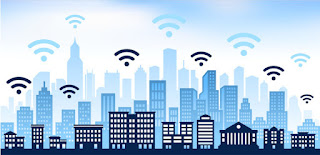Public Wi-Fi has become a common convenience, but it brings risks for both individuals and businesses in this era of remote work.
People can now work from various locations, like a local cafe, a hotel in a different city, or even an airport while waiting for a flight.
Let's delve into the potential dangers of using public Wi-Fi, both for you personally and for businesses.
According to Forbes Advisor, a majority of individuals (56%) connect to public Wi-Fi networks that don't require a password.
This convenience has a hidden cost, as many are unaware that cybercriminals can exploit this vulnerability to steal sensitive information such as credit card details and passwords.
1. Man-in-the-Middle (MITM) Attacks:
Among the most common threats on public Wi-Fi, MITM attacks involve hackers secretly intercepting and potentially altering communications between two parties.
Users believe they're communicating directly with a website, email server, or another user, but hackers are intercepting information, including sensitive data.
2. Eavesdropping:
Public Wi-Fi networks, especially those lacking encryption like WPA2, allow hackers to "eavesdrop" on data being transmitted over the network.
Tools like packet analyzers can capture unencrypted traffic, providing hackers with access to sensitive information.
3. Rogue Hotspots:
Hackers create fake Wi-Fi networks, often with names similar to legitimate networks (e.g., "CoffeeShopFreeWiFi" instead of "CoffeeShop_WiFi"). Unsuspecting users connect to these rogue hotspots, allowing hackers to monitor all traffic and capture sensitive data.
4. Honeypot Networks:
Similar to rogue hotspots, these malicious networks lure users. Once connected, hackers can deploy malware or exploit vulnerabilities on the user's device.
5. Spoofing:
In a spoofing attack, hackers impersonate another device on the network, redirecting traffic through their device. This enables them to capture and manipulate data.
6. Session Hijacking:
Attackers hijack a session between the client and server (e.g., a login session on a website), potentially gaining unauthorized access to accounts or services.
7. Malware Distribution:
Public Wi-Fi can serve as a medium for malware distribution. For instance, malware can be injected into software updates or downloads, allowing it to steal information, monitor user activity, or enlist the device in a botnet.
8. Login Page Phishing:
Some public Wi-Fi networks redirect users to login or terms acceptance pages before granting access. Hackers can replicate these pages to capture login credentials and other personal information.
Protecting Yourself and Your Business:
For Hotspot Owners:
1. Consider implementing web filtering for Wi-Fi hotspots to protect guests from malware and harmful resources.
2. Utilize DNS filtering services to gather valuable anonymized statistics about user preferences for marketing campaigns.
For Public Wi-Fi Users:
1. Implement DNS filtering services like SafeDNS and select cybersecurity categories to block malicious websites.
2. Avoid accessing sensitive sites or services like online banking.
3. Turn off sharing settings on your device.
4. Forget the network after disconnecting to prevent automatic reconnection.
5. Use HTTPS websites and ensure SSL/TLS is in use when transmitting sensitive data.
In conclusion,
while public Wi-Fi offers convenience, it's vital to be aware of its vulnerabilities and take necessary precautions to ensure data security.






0 Comments